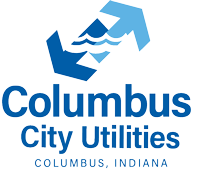- What are PFAS and why were they developed? These are chemical compounds initially designed in the 1940s to make life easier, better or safer. They have been used to fight fires and recover oil, and to produce medical equipment, food packaging, cleaning products, nonstick cookware, stain- and water-resistant coatings, paints, inks and cosmetics. The chemicals first started showing up in human blood tests in the 1960s, according to the Centers for Disease Control and Prevention. By the turn of the century, an estimated 98% of Americans had detectable levels of PFAs in their blood.
- Why are we talking about this now? The Environmental Protection Agency (EPA) released information on the Unregulated Contaminant Monitoring Rule (UCMR). Studies have shown that their use has led to a serious challenge for public water suppliers. Many other legacy PFAS that are no longer used have already entered the environment. While there are hundreds of banned PFAS, there are thousands more in existence, and more than 600 used commercially in the United States.
- How extensive was the monitoring by the EPA before the report was released? The data release from UCMR 5 results reflects monitoring for 29 different PFAS compounds and lithium at more than 2,000 systems. This was a sample of more water systems than any previous UCMR, including all systems serving more than 3,300 people and a statistical sample of smaller sized systems. We expect the EPA will finalize the PFAS standard this year, nine months ahead of the SDWA statutory deadline for promulgation.
- Were PFAS found in water systems in other areas of the country? In fact, Perfluorooctanesulfonic acid (PFOS) was detected in 6.0% of samples and above the provisional health advisory level in 8.5% of systems. Perfluorooctanoic acid (PFOA) was detected in 5.7% of samples and present above the provisional health advisory level in 7.8% of systems.
- Who is being held responsible for the impact of these contaminants? We need the EPA and other agencies of the federal government to help by promulgating rules and regulations to control PFAS risks before harmful substances are introduced into our environment. We believe that those who produce PFAS should be liable for cleaning up drinking water and the environment.
- What happened here in Columbus? We have consistently monitored our systems since 2013. We participated in a voluntary monitoring program with the Indiana Department of Environmental Management and samples were taken on 5/15/2023 with the results received on 7/18/2023. Those results demonstrated that PFOA and PFOS levels were exceeded at our entry point and at four (4) wells in the community. Please note that IDEM requires resampling at all WP2 sites for verification of the results before action is needed and has established a tentative close date for this event in 9/2023. They require a tentative close date for the entire initiative in 12/2023.
- What actions are also being taken by Columbus City Utilities to address this issue? Protecting our community’s public health remains a top priority. That’s why we are taking several immediate and long-range steps to address the issue.
First, we will remain consistent, accessible and transparent in all of our actions and will keep our consumers informed. That means updates to our website throughout the process, briefings for community groups and elected and appointed officials, outreach to state and federal officials, including our local public health offices and expanded partnerships with our local businesses. We will also increase our outreach to our consumers via information on bills, community meetings and direct response to consumer inquiries.
Second, please note that CCU constantly reviews our systems for unregulated contaminants to stay ahead of potential health risks. Our water meets current federal and state standards for safety. We will always do everything possible to meet those requirements.
Third, we have hired a globally recognized engineering firm to help us determine how we can keep our drinking water safe by protecting it at its source. Arcadis will help guide CCU in planning, designing, and implementation of successful PFAS treatment and removal for the community’s water supply. This will include expanding our focus on how water risks are assessed and managed in order to meet state and federal standards.
Fourth, we will design, propose and with community support, implement cost-effective plans to make capital investments for our infrastructure systems so that the latest technologies are in place to reduce the threat to public health of the rate payers that we serve. This will include additional studies, extensive public outreach, review of the financial impact of any improvements, cooperation with local, state and federal officials on a long-range and effective plan and continued efforts to “do more with less” to benefit our ratepayers.
- What are some of the technologies that CCU might use to reduce the incidence of PFAS in our water system? Our team will work with our professional partners and will consider a variety of strategies to address the issue, including the use of Granular Activated Carbon, Anion Exchange and Membrane Filtration technologies. Each is designed to mitigate PFAS. All require significant increases in capital and operating expenses. However, we reiterate that reducing or eliminating PFAS at the source remains the most efficient action to address potential concerns related to PFAS in drinking water.
- What can the federal government do to help Columbus City Utilities address this problem? We will be working with our federal elected and appointed officials to advocate for major increases in federal funding to develop technologies to remove problematic PFAS more cost-effectively from drinking water to levels that do not pose public health concerns. We will also advocate for policies that reflect a reasonable approach to addressing the issue. We cannot afford additional unfunded federal mandates.
Question about Your Drinking Water?
For further information on Columbus City Utilities or our Water Quality Report, contact us online, by phone at (812) 372-8861 or by email at ccu@columbusutilities.org
